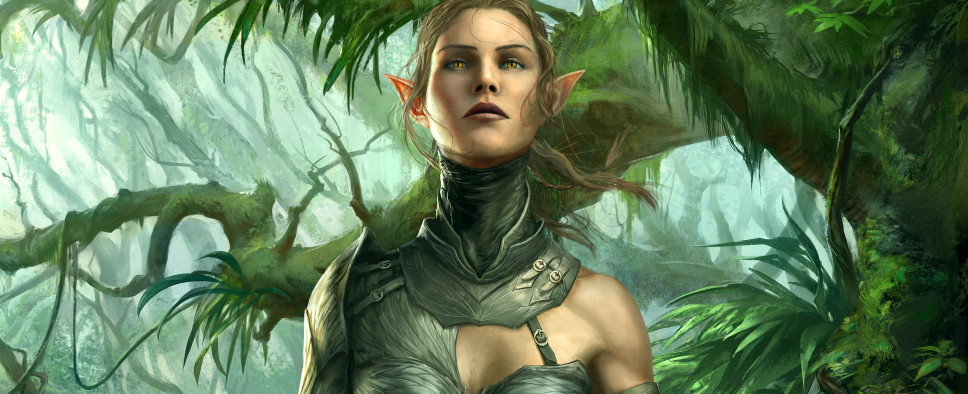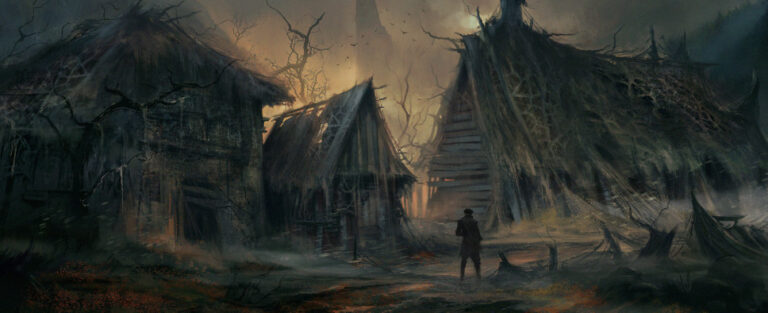Instead, let’s talk about the new additions and changes to the formula. D:OS 2 seems to have been fine-tuned and expanded in every aspect of its design; it’s been massively improved in comparison to the prototype I played last year. Even some of Larian’s most outrageous ambitions seem to have been successfully implemented. The tags and origins systems, for example, have transformed character creation into an even more complex experience and brought a staggering amount of reactivity to the game. When you make your character (only one this time), you can choose from a range of races (Human, Elf, Dwarf, Lizard in the Early Access version; Undead will be unlocked later) and pre-written origins (currently four, from exiled prince to vengeful former slave). Each of these selections will add a “tag” to your character, and this tag is then frequently (!) checked during character interactions.
For example, if you choose the The Red Prince origin, you will get the “Red Prince” tag; this identifies you as male lizard who is trying to reclaim his noble birthright. This tag also unlocks a personal questline to regain the throne, which you can pursue alongside the game’s main quest. You can then add two other tags like “Jester” or “Scholar” to further flesh out your character’s personality; other tags can gained during gameplay. Each of these tags unlocks unique NPC reactions – some good, some bad – and gives you access to special dialogue options. If you have the wrong tag, an NPC might refuse to speak to you or even try to kill you; conversely, NPCs who react positively to your tag might offer you an alternate quest solution or give you information you would otherwise not have been able to find.
While the prototype still seemed slightly gimmicky and offered room for doubt about the large-scale viability of such a complex system, the new Act 1 gameplay felt very “real” and convincing. I talked to well over a dozen NPCs in the rather sizeable prison colony of Fort Joy (the first Act of the game, and the area featured in the Early Access version), and the sheer amount of reactivity I encountered was jaw dropping; every conversation I had seemed to be influenced by my character’s personality, race, or background, and many of these reactions seemed to be quite meaningful, affecting quest solutions and forcing me into battles I might otherwise have avoided. I can’t think of any other game that has offered this level of character-based reactivity; if Larian can maintain this level of detail throughout the game, I will be deeply impressed.
Bubbles: How does character level influence combat difficulty? Are level differences still a major factor?
Swen: Everything’s changed. Maybe I should talk to you about the memory system first, because there’s a lot of confusion about that, because I fucked it up in my explanation. This is the memory interface – by the time it’s in your hands, it’ll look different. I can unlearn all my skills, and I can click on them to learn them again; I never forget a skill, but I only have a limited deck that I can use in combat. In the new interface, you can actually have pre-set decks [so you can switch between deck A, deck B, etc. on the fly]. We’re doing it like this because in the past, the limiter for the amount of skills you had was in these abilities – the points you put in Aerotheurge, for instance, would determine whether you had novice skills, medium skills, etc. – it determined how many skills you had. We got rid of this [progression] because it simplifies it, and we put that into the Memory [stat] instead.
That allowed us to put much more into these [abilities] in terms of actual levelling. [He highlights one of the magic abilities and reads the tooltip.] “Increases all damage you deal to magic armour.” You can put up to 15 points into each of these abilities, and they can increase damage or protection depending on which abilities you select. Because of these, your skills are going to become more powerful as you level up. This was not really the case in OS 1 or the EE. Enemies also get these benefits, so they’re going to hit you much harder if they’re at a higher level than you.
Then we have the armours [the magical and physical armour pools that protect a character and make them immune to status effects until they are drained] which are obviously important. An alpha strike isn’t going to work very well against a guy with a lot of armour. At the start, you’re not going to see a lot of magical armour; later on, you will see more physical armour, more magical armour, there’s going to be play with resistances going on, these abilities for the enemies will be going up, which will make them hit harder, and obviously they’ll get more skills that they can use. It should lead to a more challenging mid- to end game than in was in the enhanced edition.
Bubbles: If you encountered an enemy who was, say, three levels above you in the original game, you’d have a tough fight. Comparatively, what kind of fight would you have here? Would it be harder?
Swen: You would still have a tough fight; it wouldn’t be the same because of the changes in stats, but it’s doable. You’d have to use the environment, you’ve have to use all the tricks like grenades, maybe plant a mine, take some barrels with you, plant them by sneaking behind the enemy, seek a height advantage, or what you’ve been doing – I saw that you were sneaking all the time. That will be techniques you can use, but you’ll still be able to [beat] it. But I hope it’s gonna be tough.
Of course you have to take into account that we’re not making this for a small hardcore audience; we’re making this for the same audience we made OS for, so we can’t make it too hard; that’s what we have Tactician mode for.
…
Bubbles: Since you mentioned the origin stories, let’s talk about the writing…. I’ve played more of this version than I played with the prototype, but I still remember what was on the prototype. I saw some changes in the prototype from the original game, but I wasn’t fully convinced that it had changed. What I’m seeing now is a radically different style of writing; stunning, absolutely…
Swen: I’m happy to see that you recognize it.
Bubbles: It’s hard to imagine it being in the same game series. Bioware sometimes changes writing throughout their game series, but I can’t think of many companies that would allow an example like this; this is actually a very strong example [of a stylistic change] for me. It’s good writing… it convinces me. It’s real – it’s an enormous achievement compared to Original Sin 1 for me.
Swen: …took sweat and blood and tears…
Bubbles: …how much has your writing team changed?
Swen: You’ll be surprised, maybe, to hear that the leads on this team are the same writers that wrote OS 1. But they have time now, and time makes a very big difference. We’ve been iterating the writing [a lot]; if I would show you the initial dialogues, you’d say “that’s shit!”, but that’s just the process, right? Writing is something were you need to have time to go over it, start to get into the characters. We now have 8 writers, and they now have time to get into the heads of every single character and they have to “speak” like that character. So we think about each character: “What would they say? Would they say that? No, they probably wouldn’t say that.” So it changes and changes, and the result… it feels a little better. We were also very explicit that it had to be the way you talk… it’s a much more natural conversation style now. Of course, you played that noble [The Red Prince] and he still talks like a noble, but that’s “him”; that’s because of his upbringing. If you take Lohse [a lady who acts as a vessel for demons and spirits], she’s gonna be talking like a jester, which is a completely different tone; same thing goes for Sebille, she was a slave in the Ancient Empire, so she’s very bitter, she hates everything. It really changes from character to character; it’s also different writers who write each of them, so they can really get into their heads.






